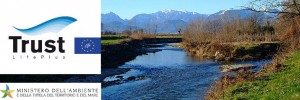TRUST – Tool for regional-scale assessment of groundwater storage improvement in adaptation to climate change
The primary goal of the TRUST project is to adapt groundwater of the Veneto and Friuli Plain to the adverse impacts of future climate change. TRUST will demonstrate innovative actions aimed at halting and reversing the slow but progressive decline of the water table in the Veneto and Friuli Plain that has been under way for the last 30-40 years. The TRUST project intends to incorporate climate change in river basin management and identify adaptation measures based on artificial aquifer recharge to mitigate the impacts of drought and water scarcity. Secondly, the TRUST project intends to build the capacity to define the objectives and measures for the aquifer recharge in the Veneto and Friuli Upper Plain using excessive surface waters (e.g. from floods). With this scope, TRUST links with European water policy, namely Water Framework Directive, Floods Directive and the European Policy on Water Scarcity and Droughts. The project will examine the aspects connected to the development of the “river basin governance” and will focus on the set-up of a group of stakeholders concerned with the management and use of the groundwater resources in the project area. TRUST also aims at increasing the knowledge base of groundwater quantitative processes in the study area through the implementation of innovative tools such as remote sensing, hydrological & groundwater models, climate change models, risk assessment and Web-GIS.
Within this project the research unit is involved in the Action 7 (Evaluation of objectives and measures for artificial aquifer recharge and cost benefit analysis) and will work on the implementation of a Regional Risk Assessment methodology (RRA) following three main steps:
- development of the methodology and of the conceptual framework;
- definition of impact and risk indicator and indices;
- construction of different scenarios using the output of the other models developed within the project as an input;
- production of vulnerability and risk maps.
The final maps will be used to compare different scenarios and make a ranking of the different intervention options.
Link: http://www.lifetrust.it
